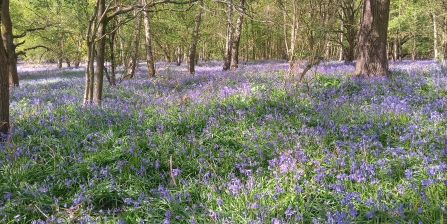In 2018, Warwickshire Wildlife Trust acquired two sizeable areas of land, Piles Coppice and Brandon Reach, which expanded our nature reserve footprint surrounding Brandon Marsh. These areas included sections of important ancient semi-natural woodland which hadn’t been managed in some decades. One motivation to acquire these nature reserves was to deliver part of a new strategy aimed at making Warwickshire’s woodlands better protected for wildlife and people, more resilient to change, and sustainably managed.
In particular, the recent COVID-19 crisis has highlighted an increased value of green spaces used by local people, so the Trust’s commitment to increasing accessibility to well protected nature sites is closely tied in with this strategy.
Warwickshire is among the least wooded counties in the UK, which in turn is one of the least wooded countries in Europe. This makes Warwickshire’s woodlands precious and important within the landscape. Woodlands have been essential to people for thousands of years, used for timber, fuel and shelter, and more recently for public recreation as well. We know woodlands play an important role in securing carbon, purifying the air we breathe and also helping to prevent flooding.
Warwickshire Wildlife Trust advocates for actively managing wildlife habitats for biodiversity and sustainable woodland management can help secure the long term future of woodlands. Trees of different ages and varied structures due to cyclical felling, thinning and coppicing will attract a bigger range of wildlife, and will also be more resilient to pests, diseases and climate change. Therefore, one of the biggest threats to our woodlands is the decision not to manage them.
Parts of Brandon Reach and Piles Coppice haven’t seen management since around the 1950s, and particularly in Piles Coppice the woodland has almost fully closed over - consisting mainly of deteriorating and even-aged small leaved lime coppice stools and closed-canopy oak high forest. Whilst this type of woodland benefits many common species adapted for such conditions, some of the threatened and rare species that require a varied structure and differing levels of light and micro-climates are in danger of being squeezed out. The woodland is also lacking enough canopy gaps and light to encourage the next generation of trees to come through, which would replace the older trees once they reach the end of their natural life expectancy. This is particularly concerning in a woodland made up of mainly similar aged trees, and threatens the long-term stability of the wood.

